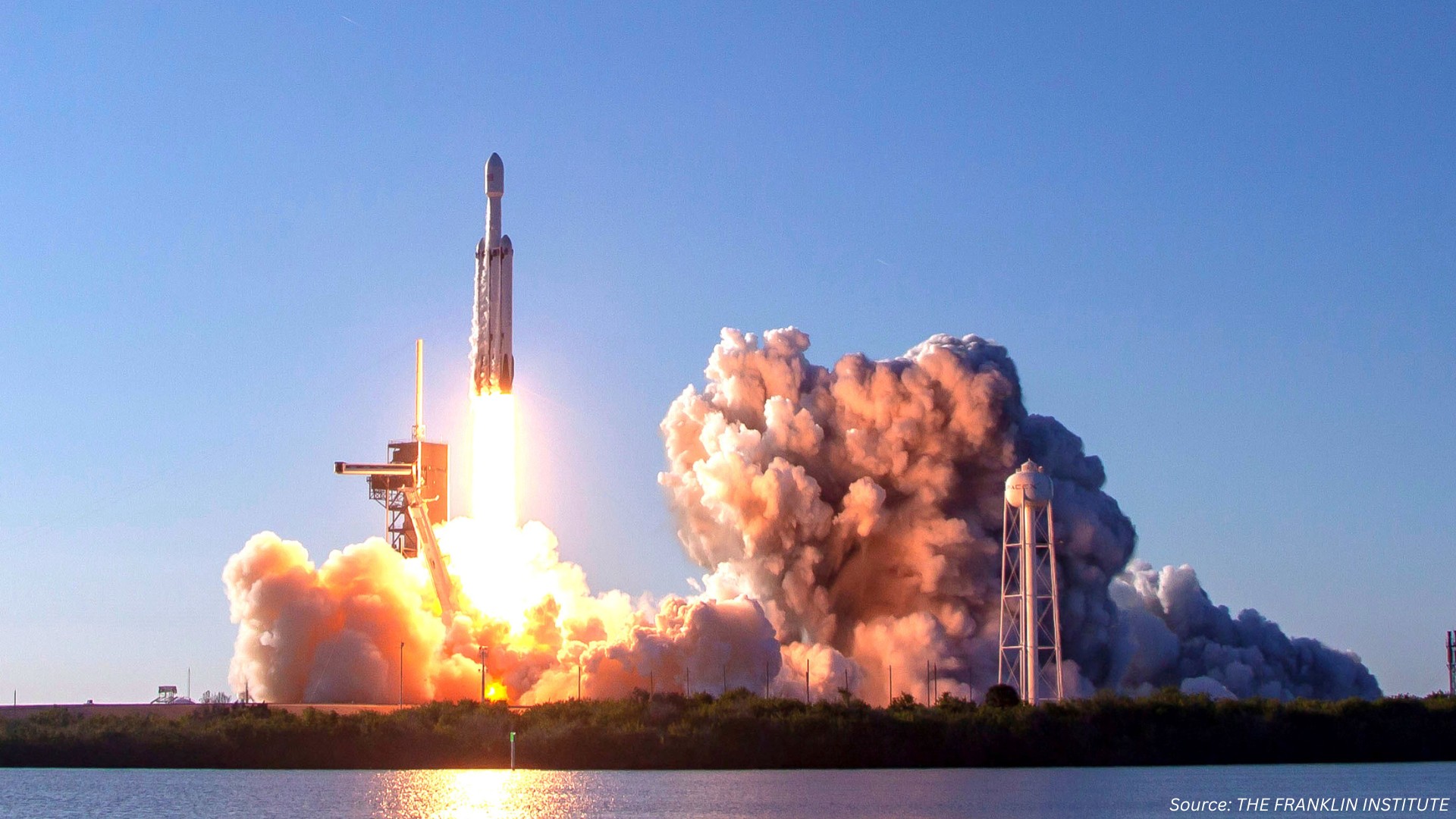
Reconnaissance Satellite Market by Type (Optical Satellites, Synthetic Aperture Radar (SAR) Satellites, Electro-Optical Infrared (EO/IR) Satellites, Signal Intelligence (SIGINT) Satellites, and Others), and by End User (Government Agencies, Aerospace & Defense, and Others)- Global Opportunity Analysis and Industry Forecast-2024-2030
Reconnaissance Satellite Market Overview
The global Reconnaissance Satellite Market size was valued at USD XXX billion in 2023 and is predicted to reach USD XXX billion by 2030 with a CAGR of XXX % from 2024-2030. The reconnaissance satellite market also known as intelligence or spy satellite market includes the global industrial sectors that focus over the satellite development, deployment, and operation for the wide range of purpose such as reconnaissance, surveillance, and intelligence gatherings. Advanced imagining and sensor technology feature is present in the satellite that aids in capturing high resolution images and data from surface of the earth for offering critical information for defense, security and environment monitoring applications.
The key feature of the market lies in its capability to offer real time, near real time intelligence and global coverage feature to support critical missions. The benefit of the market includes the presence of advanced satellite that aids to strengthen national security, enable strategic decision making and facilitate instant response to crisis through providing actionable intelligence data from remote location around the globe. Overall, the market serves indispensable capabilities for both military and civilian application through supplying advanced intelligence satellite.
Market Dynamics and Trends
The rise in military expenditure provides substantial financial support to adopt advanced intelligence tools such as reconnaissance satellite for maintaining national security, thereby boosting the reconnaissance satellite market growth. The Stockholm International Peace Research Institute (SIPE) report 2024, reveals that global military expenditure reached around USD 2443 billion in 2023 that includes a 6.8% growth from the previous year. This surge in military expenditure propels the adoption of advanced technology including spy satellites to aid intelligence gathering activities such as real time surveillance, and monitoring of adversary movements across defence verticals.
Additionally, the growing synergy between government agencies and private entities for development of reconnaissance satellite in commercial and military sector is boosting the growth of the market. For instance, in January 2024, Kratos Defense & Security Solutions, Inc. partnered with Rancher Government Solutions to propel satellite ground systems. This partnership introduces an approach that invokes change, making virtualised and software-defined ground systems more accessible and responsive to the demands of modern satellite operations. Such synergy propels the capabilities and reach of intelligence satellites thereby driving its market growth through combination of innovation, resources and efficiency of both the sectors.
Moreover, the expansion of the space industry drives the demand for reconnaissance satellite to facilitate space exploration activities and enable real time data monitory for defense sector. Intelligence satellites consist of advanced surveillance features for ensuring security of space assets, safeguard space mission and monitor potential defense threats. As per the latest report published by World Economic Forum states that the global space economy is expected to reach around USD 1.8 trillion million by 2035 growing at a 9% rate on annual basis. This reflects a positive outlook for the adoption of intelligence satellites, facilitating defense initiatives.
However, the high development cost associated with the designing and deployment of reconnaissance satellite leads to high financial cost that restraints the market growth. Huge amount of investment is required for rigorous testing and research requirements of intelligence satellite that creates a significant barrier for entry of small and medium size start-ups, thus hindering the market growth.
On the other hand, incorporation of multi-spectral sensors in reconnaissance satellite enhances the capabilities of the spy satellite to collect and analyse strategic data across various wavelengths. These sensors are capable of capturing images beyond visible light, thus it is expected to create substantial opportunities for the market growth in the forthcoming years.
Market Segmentations and Scope of the Study
The reconnaissance satellite market report is segmented on the basis of type, end-user, and region. On the basis of type, the market is divided into optical satellites, synthetic aperture radar (SAR) satellites, electro-optical infrared (EO/IR) satellites, signal intelligence (SIGINT) satellites and others. On the basis of end user, the market is divided into government agencies, aerospace & defence, and others. Regional breakdown and analysis of each of the aforesaid segments include regions comprising North America, Europe, Asia-Pacific, and RoW.
Geographical Analysis
North-America dominates the reconnaissance satellite market share and is expected to continue its dominance during the forecast period. This is due to the surge in defense expenditure in the countries such as U.S., and Canada that heightens the adoption of advanced intelligence and surveillance assets such as satellites. The Peter G. Foundation revealed in its latest report that the defense expenditure in U.S. spend around USD 916 billion that accounted for 40% of the global military expenditure. This growing expenditure supports the development and deployment of intelligence satellites for military surveillance and protecting national security.
Additionally, the growth of the reconnaissance satellite market trends in this region is further driven by substantial government funding directed towards the development and deployment of advanced satellite capabilities. The latest report of Organization for Economic Cooperation and Development (OECD) states that Canadian institutional space budget amounted to approximately 298 million in 2022. The dedicated funding ensures that the country maintains a technological edge in space-based reconnaissance, supporting continuous innovation and the deployment of cutting-edge satellite systems.
On the other hand, the Asia-Pacific region is expected to show a steady rise in the market growth. This is attributed to the rising collaboration between government authorities and private entities towards deployment of spy satellites through pooling of resources, expertise and technology. For instance, in April, 2024 South Korea successfully launched, its second military spy satellite into orbit in Falcon 9 rocket, under the country’s contract with SpaceX to deploy five military intelligence satellites by 2025. This development enhances the surveillance and reconnaissance capabilities of the country and opens up new commercial opportunities for the market growth.
Moreover, the rapid advancement in satellite technology in the region combined with emerging private sector companies in satellite manufacturing is driving the market growth. For instance, in February, 2024, Tata Advanced System Ltd., a domestic company of India launched the country’s first spy satellite. This product launch marked a significant shift towards enhancement of self-reliance capability in satellite technology in India. Such advancement by local companies towards innovation and advancement of spy satellite enhance the availability of such satellites, thereby fuelling its adoption in the region.
Competitive Landscape
The reconnaissance satellite industry comprising of various market key player such as, Lockheed Martin Corporation, Northrop Grumman Corporation, Viasat Inc., L3Harris Technologies Inc., Airbus SE, Thales Alenia Space, Hughes Network Systems LLC, Kratos Defense & Security Solutions Inc., Mitsubishi Heavy Industries, Ltd., SpaceX, and others. These market players are adopting various strategies such as product launches and collaboration to maintain their dominance in the market.
For instance, in May 2024, SpaceX introduced the first batch of spy satellites with next generation features for National Reconnaissance Office (NRO). This mission reflects about the beginning of the new imagining satellite constellation of NRO that aims at increasing the intelligence capabilities with more frequent visits of critical areas in the upcoming years.
Key Benefits
-
The report provides quantitative analysis and estimations of the reconnaissance satellite market from 2024 to 2030, which assists in identifying the prevailing market opportunities.
-
The study comprises a deep dive analysis of the current and future reconnaissance satellite market trends to depict prevalent investment pockets in the market.
-
Information related to key drivers, restraints, and opportunities and their impact on the reconnaissance satellite market is provided in the report.
-
Competitive analysis of the players, along with their market share is provided in the report.
-
SWOT analysis and Porters Five Forces model is elaborated in the study.
-
Value chain analysis in the market study provides a clear picture of roles of stakeholders.
Reconnaissance Satellite Market Key Segments
By Type
-
Optical Satellites
-
Synthetic Aperture Radar (SAR) Satellites
-
Electro-Optical Infrared (EO/IR) Satellites
-
Signal Intelligence (SIGINT) Satellites
-
Others
By End User
-
Government Agencies
-
Aerospace & Defence
-
Others
By Region
-
North America
-
The U.S.
-
Canada
-
Mexico
-
-
Europe
-
The UK
-
Germany
-
France
-
Italy
-
Spain
-
Denmark
-
Netherlands
-
Finland
-
Sweden
-
Norway
-
Russia
-
Rest of Europe
-
-
Asia Pacific
-
China
-
Japan
-
India
-
South Korea
-
Australia
-
Indonesia
-
Singapore
-
Taiwan
-
Thailand
-
Rest of Asia Pacific
-
-
RoW
-
Latin America
-
Middle East
-
Africa
-
KEY PLAYERS
-
Lockheed Martin Corporation
-
Northrop Grumman Corporation
-
Viasat Inc.
-
L3Harris Technologies Inc.
-
Airbus SE
-
Thales Alenia Space
-
Hughes Network Systems LLC
-
Kratos Defense & Security Solutions, Inc.
-
Mitsubishi Heavy Industries, Ltd.
-
SpaceX
REPORT SCOPE AND SEGMENTATION:
|
Parameters |
Details |
|
Market Size in 2023 |
USD XYZ Billion |
|
Revenue Forecast in 2030 |
USD XYZ Billion |
|
Growth Rate |
CAGR of XY% from 2023 to 2030 |
|
Analysis Period |
2023–2030 |
|
Base Year Considered |
2023 |
|
Forecast Period |
2024–2030 |
|
Market Size Estimation |
Billion (USD) |
|
Growth Factors |
|
|
Countries Covered |
28 |
|
Companies Profiled |
10 |
|
Market Share |
Available for 10 companies |
|
Customization Scope |
Free customization (equivalent up to 80 working hours of analysts) after purchase. Addition or alteration to country, regional, and segment scope. |
|
Pricing and Purchase Options |
Avail customized purchase options to meet your exact research needs. |
KEY PLAYERS
-
Lockheed Martin Corporation
-
Northrop Grumman Corporation
-
Viasat Inc.
-
L3Harris Technologies Inc.
-
Airbus SE
-
Thales Alenia Space
-
Hughes Network Systems LLC
-
Kratos Defense & Security Solutions, Inc.
-
Mitsubishi Heavy Industries, Ltd.
-
SpaceX

















 Speak to Our Analyst
Speak to Our Analyst
























